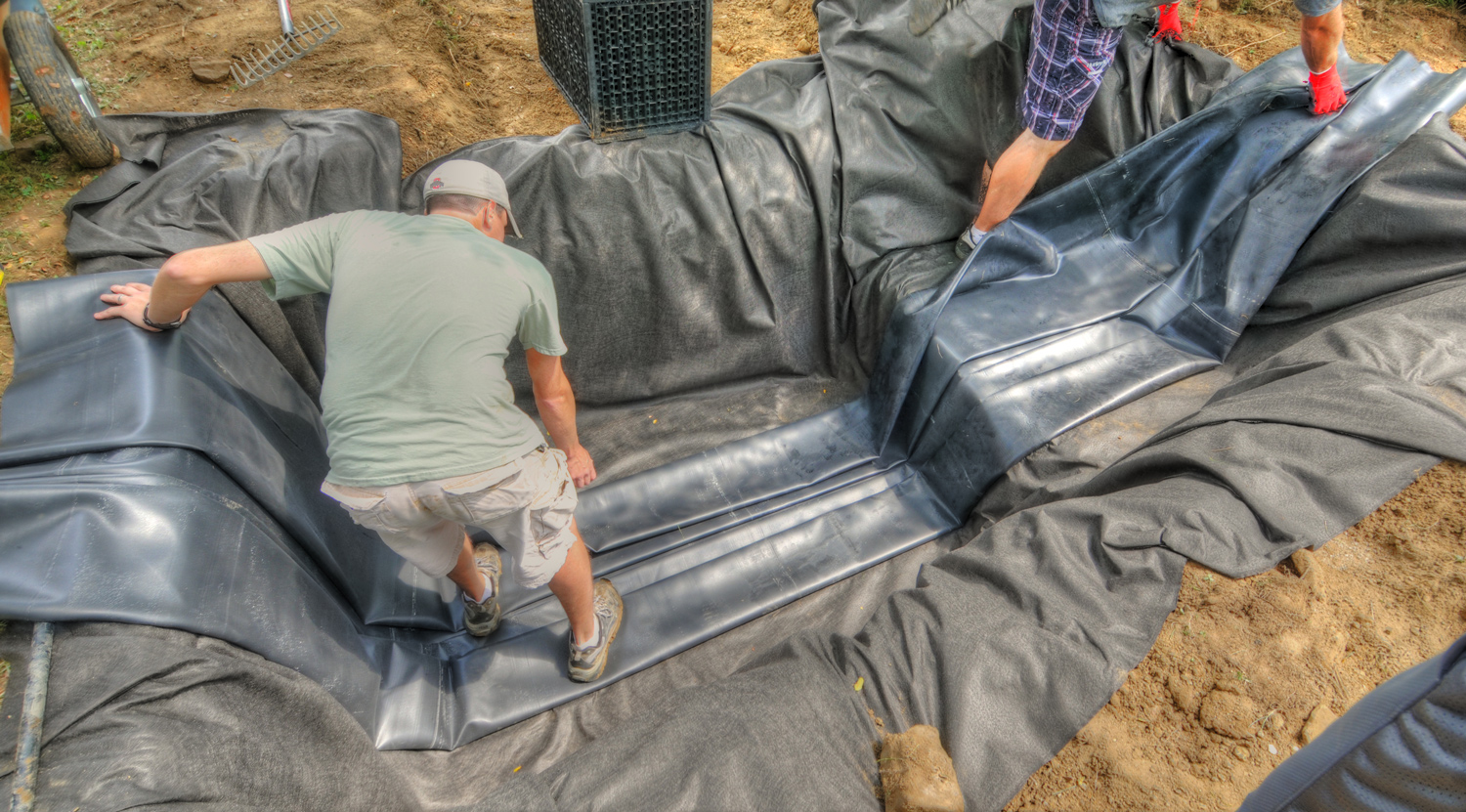Pond-Free 101
Chapter 5
Liner and Underlayment
Pond-free features typically use the same standard liner used for ponds - EPDM, for Ethylene Propylene Diene Monomer, a synthetic rubber that is inexpensive, waterproof, easy to work with and very long-lasting. The industry standard is 45 mil EPDM, 45 thousands of an inch thick (about triple the thickness of a standard vinyl swimming pool liner), available in rolls from 5’ to 50’ in width by 100’ typical maximum length. Its resistance to punctures, abrasion and sunlight along with its relatively low cost make it the ideal material for pond-free features. To protect the liner, it’s industry practice to line the excavation with a heavy geotextile fabric before installing the waterproof rubber to keep sharps and roots in the soil from perforating the EPDM. Typically the geotextile weight is measured in ounces per square yard, and 4oz. to 6oz. fabric is usually sufficiently tough to protect against punctures. For the ultimate in protection, it’s not a bad idea to lay a second layer of geotextile over the liner to completely sandwich the liner inside and out before installing the rest of the equipment, rock and gravel.





